Cherry Blossoms in Suwa
The cherry blossom is a flower that symbolizes Japan. Many people are attracted to the beauty of cherry blossoms, which herald the coming of spring. People enjoy gazing at the blooms and holding parties under the boughs of cherry blossom trees. And although the blossoms are fragile and transitory, falling and scattering within only a few weeks’ time, this only makes these flowers feel all the more special to the Japanese people.
Japan has many famous cherry blossom viewing spots, and here in Suwa as well, there are well-known spots with exceptional charm.
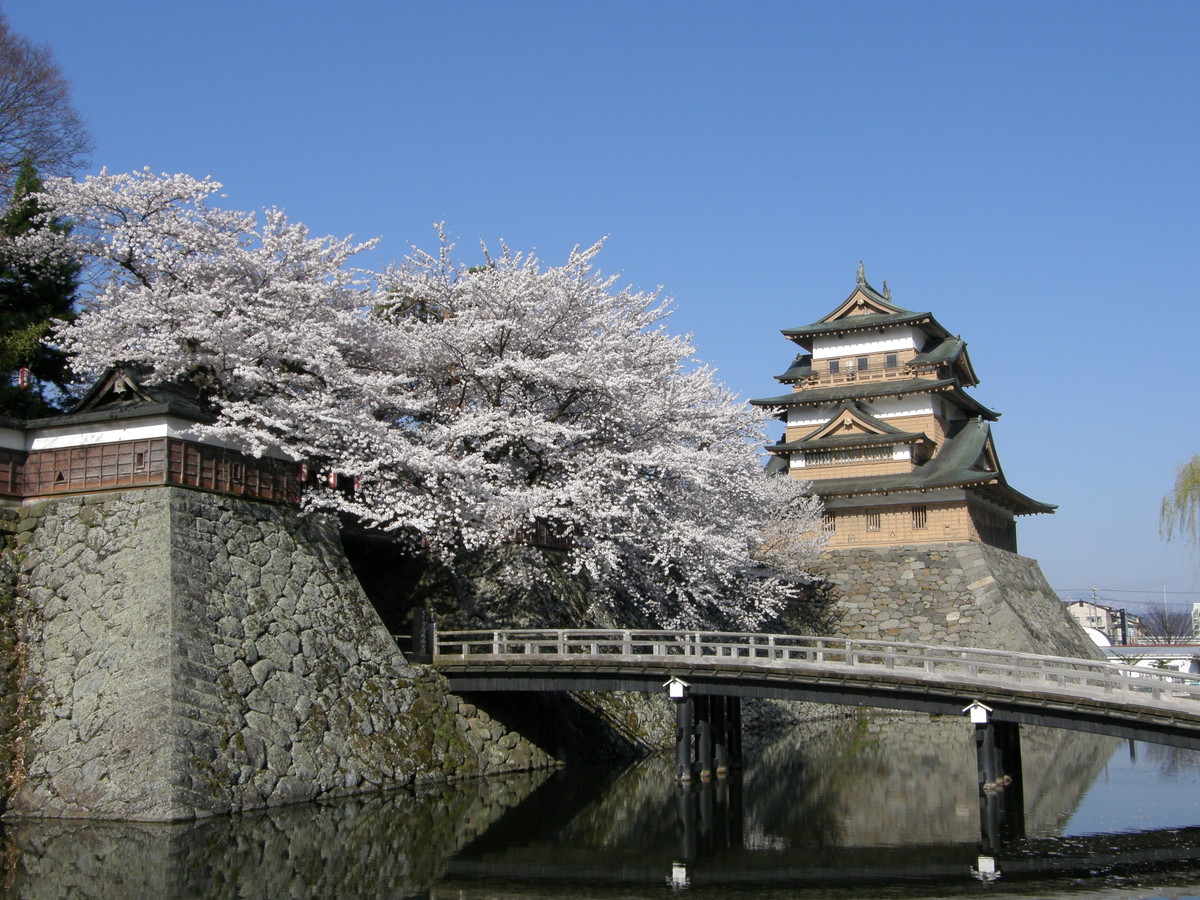
In Takashima Park, the location of Takashima Castle, which was built by a vassal of Toyotomi Hideyoshi, a military commander during Japan’s Warring States period (1467 to 1615), visitors can view roughly 90 cherry blossom trees. The majestic castle and cherry blossoms are a magnificent combination, and photographers from across the country are in love with the site.
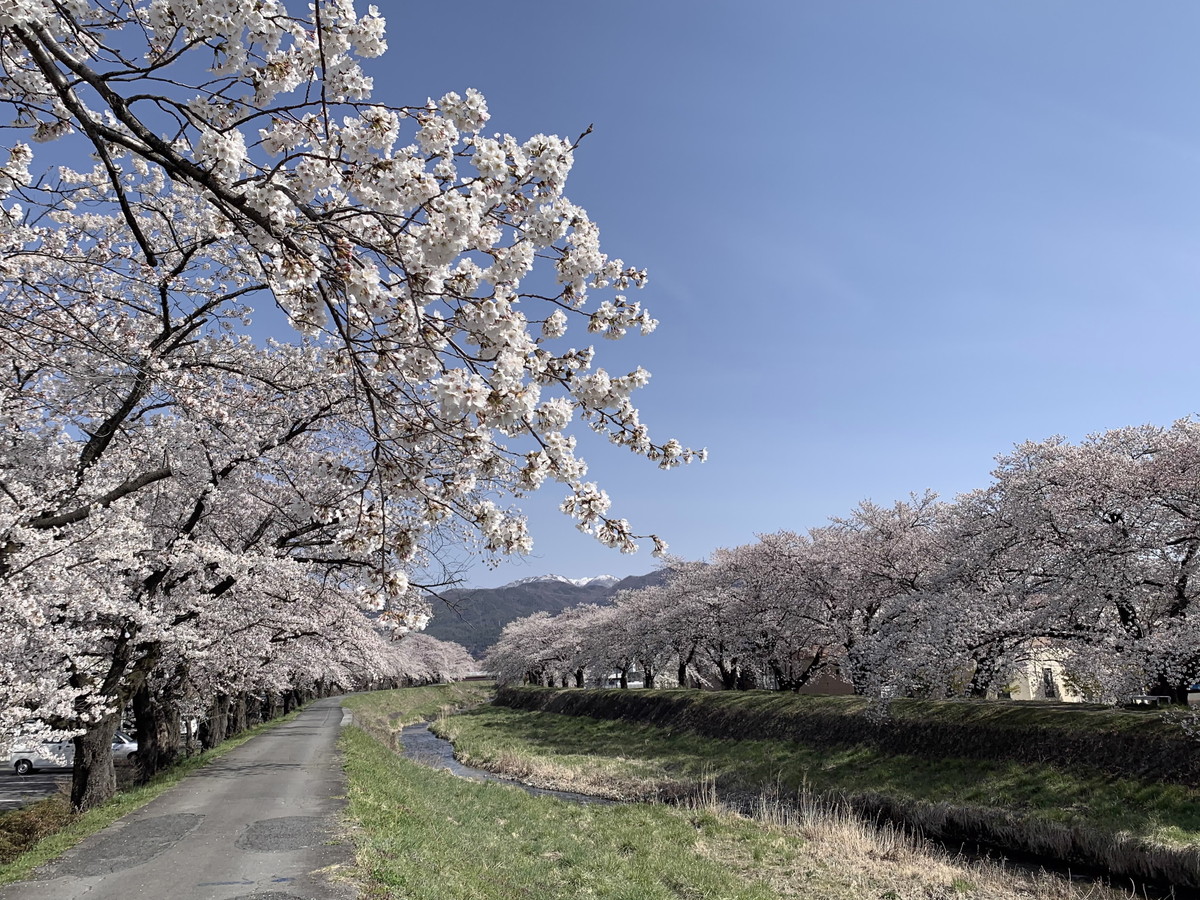
Roughly 400 cherry blossom trees line a nearly 4km-stretch along both banks of the Yokokawa River. The area is often used in filming movies and commercials, and together with the lingering-snow-topped mountains in the background, it is also delightful for walkers.
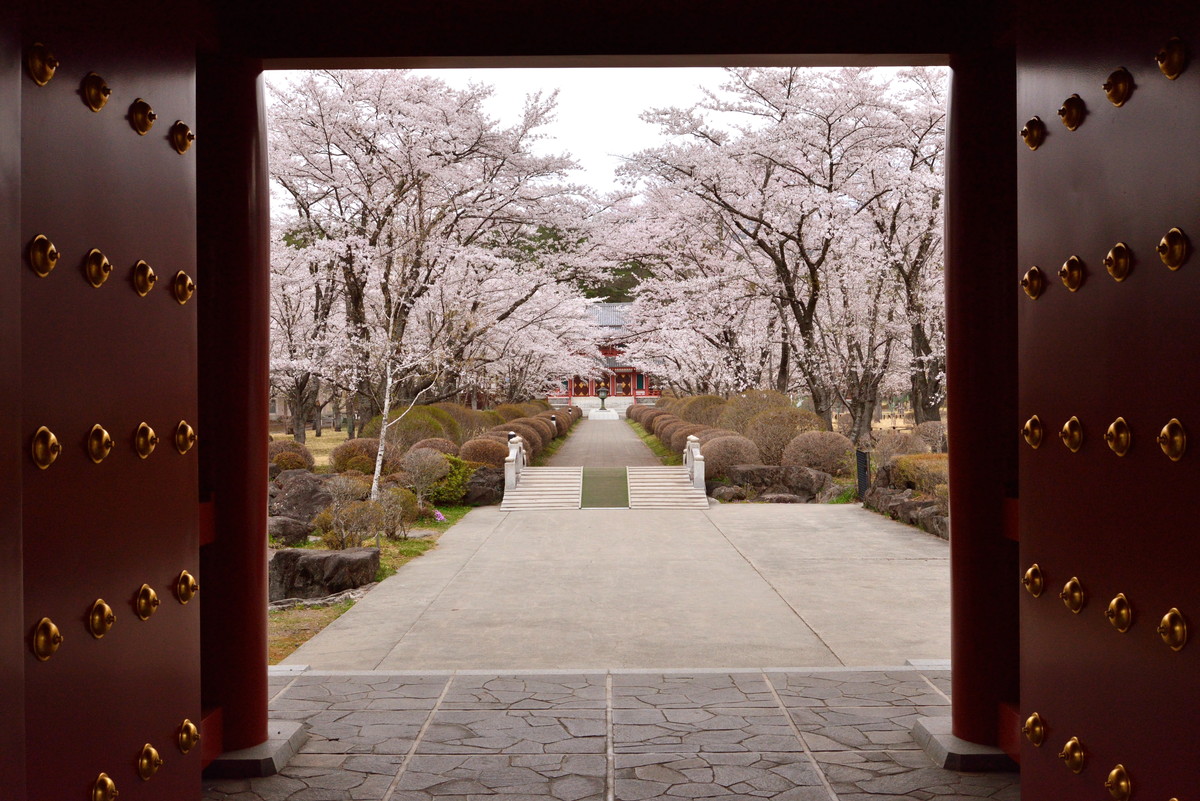
Cherry blossoms stand within the precincts of Shokoji Temple, located in the Tateshina Highlands. Roughly 300 cherry blossom trees have been planted in the area, and due to its elevation of 1,200m above sea level, the cherry blossoms here are known for blooming later than anywhere else on mainland Japan. In addition, Shokoji Temple, which was constructed by the Toyota Group, is a famous shrine to pray for traffic safety.
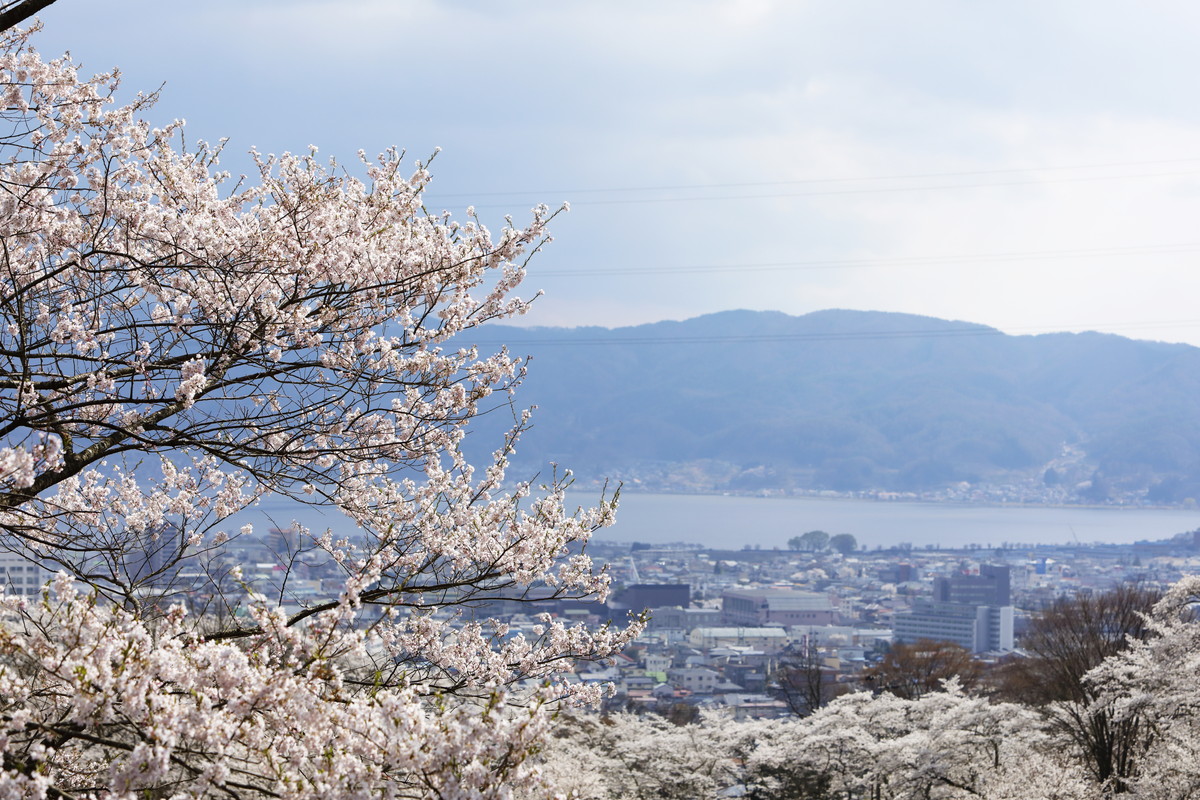
Suigetsu Park is located on a hill overlooking Lake Suwa. When spring arrives, Somei-yoshino cherry blossoms (Cerasus × yedoensis) and Kohigan cherry blossoms (Cerasus × subhirtella) bloom throughout the area. The grounds of the park are dotted with more than 30 stone monuments engraved with poems by masters such as Matsuo Basho, Yosano Akiko, and Masaoka Shiki, so you can also enjoy a literary stroll as you walk around admiring the monuments.
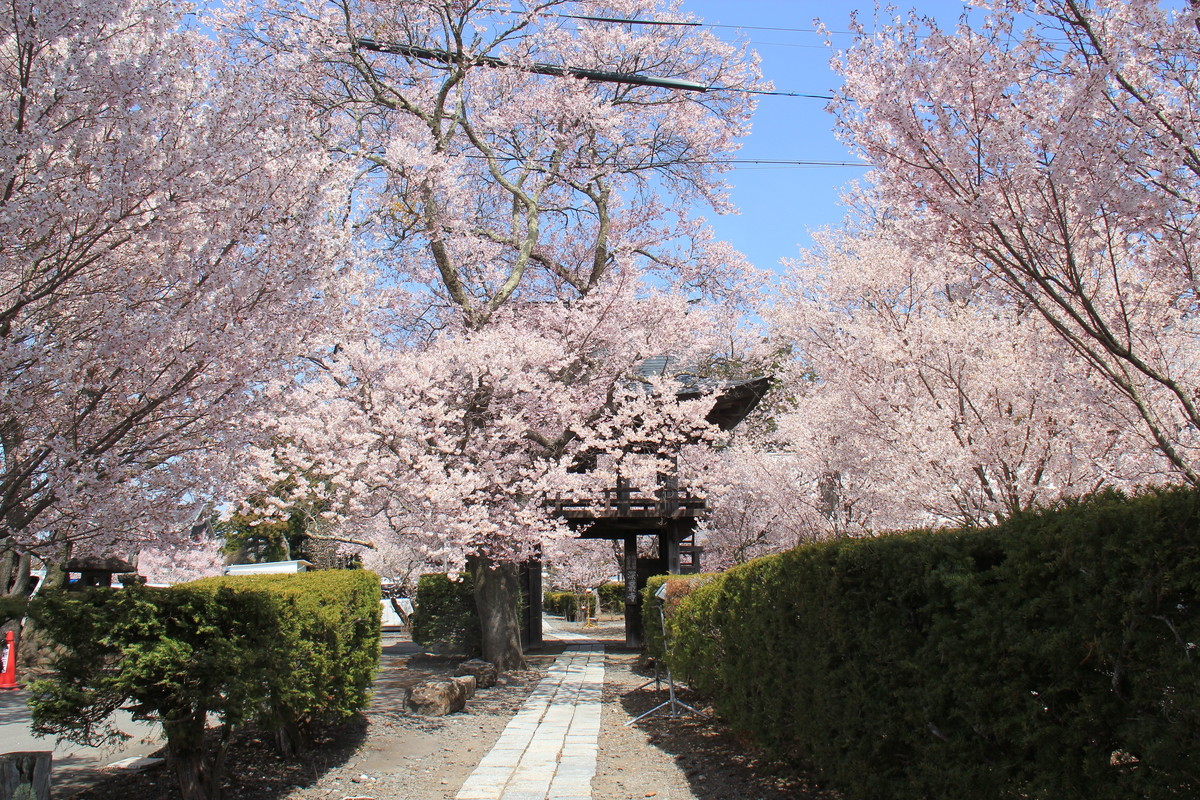
In combination, the cherry blossoms and bell tower gate of Shinsoji Temple make it a popular spot. When the cherry blossoms are in bloom, you can also view a flower called Asian skunk-cabbage (Lysichiton camtschatcensis) blooming in the pond inside the temple’s Japanese-style rock garden. The area is also illuminated at night, so you can enjoy a fantastical view of cherry blossoms.
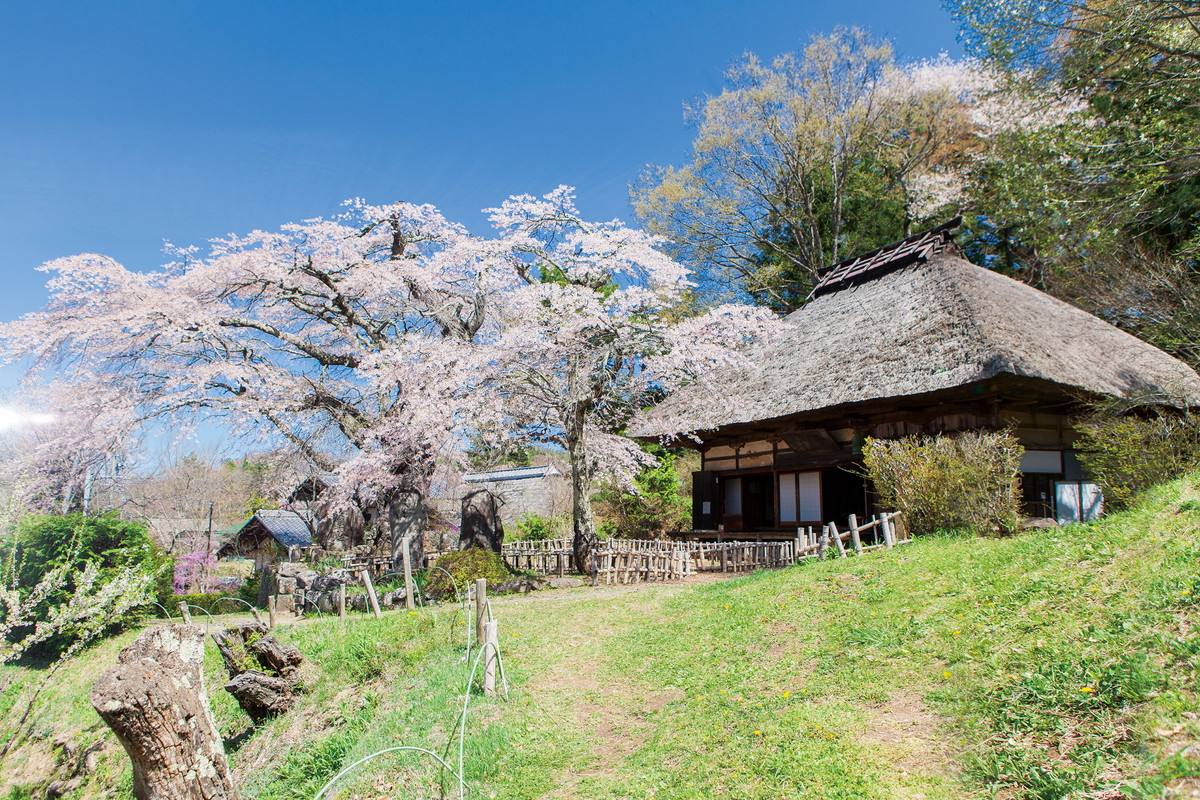
Last but certainly not least is Takamori Kannon-do Temple. Here, an approximately 250-year-old weeping cherry tree stands over the precincts. The magnificent cherry blossoms and the thatched roof of the temple combine to form an atmospheric sight.
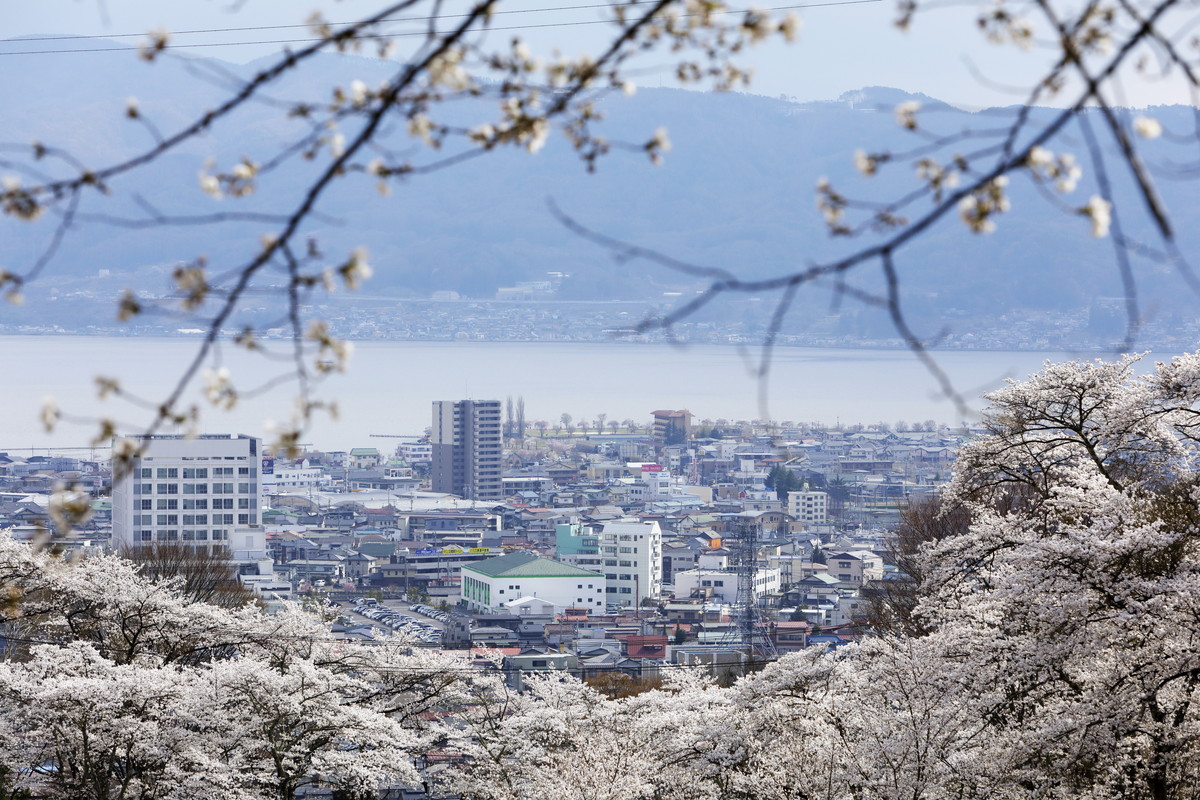
[Takashima Park: 1-20-1 Takashima, Suwa City, Nagano Prefecture (Best time to visit: Mid-April)]
[Yokogawa River: 4 Osachigongen Town, Okaya City, Nagano Prefecture (Best time to visit: Mid-April)]
[Shokoji Temple: 4035 Tateshina Kogen, Chino City, Nagano Prefecture (Best time to visit: From late April to early May)]
[Suigetsu Park: 645 Higashimachinaka, Shimosuwa Town, Suwa District, Nagano Prefecture (Best time to visit: From mid-April to late April)]
[Shinsoji Temple: 13512 Nakashinden, Hara Village, Suwa District, Nagano Prefecture (Best time to visit: From mid-April to late April)]
[Takamori Kannon-do Temple: 8059 Sakai, Fujimi Town, Suwa District, Nagano Prefecture (Best time to visit: From mid-April to late April)]